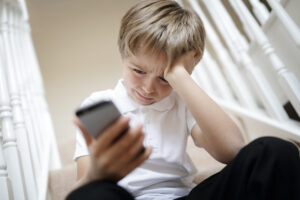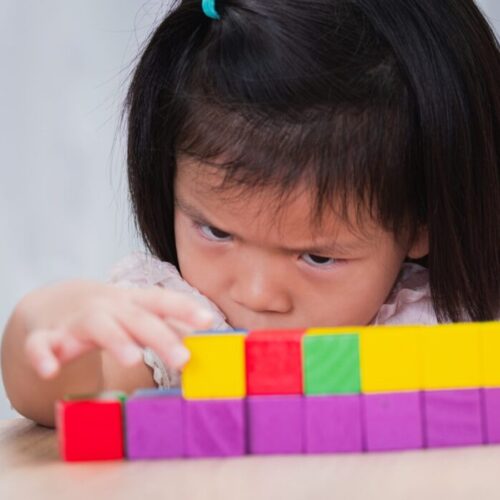The five types of bullying

Children can experience bullying in many different forms. What are they and what should you do about it?
Bullying is a true nightmare for children and parents alike. It’s deeply upsetting for parents to know that they’re little one is being treated unfairly by their peers. As the world has modernised, so has bullying. It now includes more than physical violence and a huge part of it takes place online. Let’s take a closer look at the different types of bullying, so that you can be prepared for what may be going on in your child’s school.
The five main types of bullying
It might surprise you to find out that there are a number of different types of bullying. Understanding each is a must in order to help your little one should they fall foul of a bully’s nastiness.
Physical bullying
Physical bullying is the most infamous kind, and is probably the first to jump to mind whenever you think of this problem. This style of bullying is a method of intimidation that takes place by overpowering the victim physically. It can include any forms of physical violence, including punching, kicking, slapping or pushing.
Thankfully, it is relatively easy to spot. By its nature, physical bullying is quite overt and it’s difficult (although not impossible!) for it to go unnoticed. Schools tend to be very proactive in tackling this kind of bullying.
Verbal bullying
An old phrase once said, “sticks and stones can break my bones but words will never hurt me.” While this is helpful to embolden our children to be resilient in the face of verbal bullying, the unfortunate truth is that words can hurt just as much as sticks and stones. With all kinds of bullying, the goal for the bully is to gain power over the victim. In verbal bullying, the perpetrator will use cruel tools, such as insults and name-calling, to really try to get under the other child’s skin and hurt their feelings.
Unlike its physical counterpart, verbal bullying can be very difficult to identify. It will almost always take place out of earshot of any adults and the bully will usually completely deny any wrongdoing. As there are no physical signs that anything has happened, it’s difficult to prove. Verbal bullying should be taken seriously as certain insults, especially when repeated often, can undermine a child’s confidence, damage their self-esteem and leave genuine emotional scars.
Relational bullying
Relational bullying, also known as relational aggression, is particularly prevalent among teenagers. Relational bullies use various forms of manipulation to attack a certain person in their peer group. The goal is to humiliate them and kick them to the bottom of the social hierarchy, leaving the bully as the leader of the group. This is done in sly and dishonest ways, meaning that parents and teachers may be completely unaware that this is going on. The method can include cutting the victim out of a social group, spreading rumours about them or altering situations to make it seem as if the victim has acted badly.
Cyberbullying
These days, cyberbullying is one of the biggest threats that little ones face. Given that children and teens spend so much of their time online, there are so many opportunities for this internet-based bullying to happen. By taking place solely on the web, cyberbullying is extremely challenging to pinpoint. It can happen on social media, messaging apps or even online games.
Young people are virtually always connected to the internet in one way or another, and therefore the cyberbullies can reach them anywhere, at any time. It’s very different to in-person bullying, where the victim can feel a little safer once they get home from school for example. Cyberbullying can feel genuinely impossible to escape.
Cyberbullying can also be even more malicious than other types of bullying, as the bully doesn’t need to summon the courage to say something in real life. In fact, cyberbullies tend to be individuals that use the internet as a shield to hide behind, to stay anonymous and to act out without getting caught.
Prejudicial bullying
As the name suggests, prejudicial bullying is specifically where the bully targets someone based on a certain prejudice, such as race, religion or disability. Prejudicial bullies will pick on another child or teen simply because they’re from a different background, culture, religion or ethnicity. Prejudicial bullying is extremely serious and should be treated as such. If allowed to continue, this kind of bullying can escalate into hate crimes with much worse consequences.
What you can do
Bullying in any form is an absolutely awful experience for a child. Finding out that your pride and joy is being bullied is fiercely upsetting, and it can be hard to know where to start. Firstly, it helps to be able to identify the different types of bullying that generally take place. If you suspect that something is going on, speak to your little one or teenager, and encourage them to be open with you. Bullying can force children to keep their worries to themselves, so understand that they may not be willing to share this with you immediately.
Once they do speak honestly with you and you have a strong idea of what is happening, approach your child’s school teacher, counsellor or principal – whichever is the most appropriate in your situation. Trust that they will do their best to solve this issue but make sure to prioritise your youngster’s wellbeing. Bullying, and its consequences, don’t have to last forever. So hold your child close, tell them how loved they are and let them know that you are going to make sure that the bullying will end.
Image Credit: Shutterstock











Comments